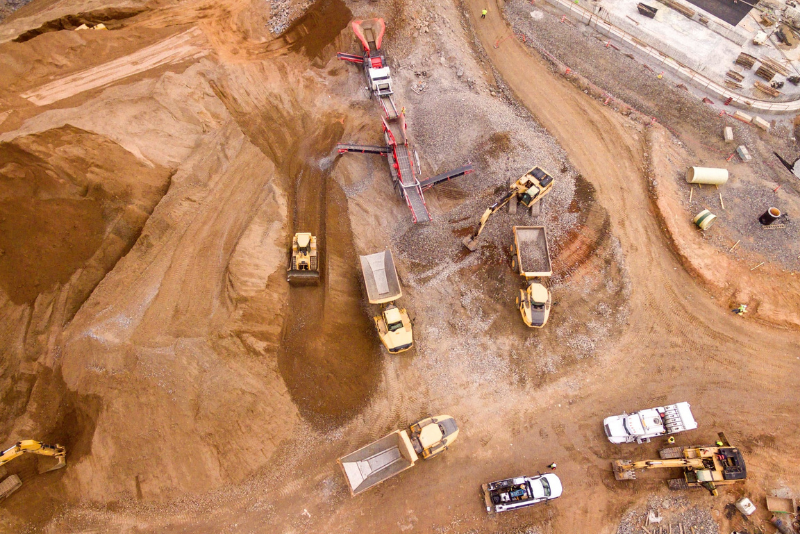The mining industry is rife with safety issues, creating a considerable cause for concern for both workers and mining companies alike. With awareness, regular safety training and the right safety precautions in place, mining can become a relatively safe industry.
As companies across Canada work to abolish safety issues in the mining industry, there's still plenty of room for improvement.
The industry employs an estimated 418,000 workers at approximately 1,200 sites across the country. 2020 saw a total of 927 mining-related injuries in Ontario, alone, resulting in a 3.88% injury rate. Furthermore, one Ontario worker was killed as a result of a work-related injury, while two more died from mining-related diseases.
Standard practices in mining continue to evolve to protect the safety and health of workers. In this post, readers can learn more about current mining industry safety standards and issues, as well as how a whistleblower hotline can improve them.
Table of Contents
Mining Industry Safety Standards
Safety in the mining industry is of the utmost importance. It saves lives and has the potential to prevent thousands of worker injuries every year.
Across Canada, the mining industry is regulated provincially with limited federal oversight. While the rules regarding safety and mining activities vary from province to province, organizations such as the Mining Association of Canada (MAC) provide guidance on legislation and regulatory issues while offering representation and advocacy for companies that operate within the industry.
MAC operates the Towards Sustainable Mining (TSM) program, which is recognized around the world for helping mining companies manage social responsibilities and ensure the safety and health of those who work for them. In some mining associations, including MAC, compliance with TSM standards is a requirement for participating companies. These standards include:
- Establishing accountability for health and safety management and performance
- Providing appropriate guidelines for health and safety and communicating them effectively to employees, contractors and visitors
- Providing appropriate training for employees to help them prevent accidents
- Establishing a clear procedure for hazard identification and risk assessment
- Regularly monitoring and reporting health and safety performance
When it comes to the guidelines set forth by the TSM program, company managers are responsible for conducting their own inspections and reports to ensure adherence. Furthermore, mining companies are required to comply with regulations that are provided and overseen by occupational health and safety authorities in each province.
Safety Issues in the Mining Industry
The safety issues facing the mining industry are vast. From occupational disease risks to the risk of severe injury or even death, miners in Canada and across the globe face potential dangers while at work every day.
Exposure to Dangerous Chemicals
In mining, workers are frequently exposed to polymeric chemicals and other potentially harmful substances. Following WHMIS guidelines and remaining aware of potential exposure risks is an important aspect of safety protocols. Mining companies should implement company regulations that address proper handling of harmful chemicals with special attention to the use of personal protective equipment (PPE), safe use, ventilation and proper disposal techniques.
Occupational Diseases
Occupational diseases remain a very real threat to those working in the mining industry. Those working in enclosed underground areas are frequently exposed to airborne hazards, including diesel exhaust , silica, and at times, asbestos. These substances are known to cause cancer in the lungs, bladder and other parts of the body. Those who've been exposed to silica dust may develop lung cancer, silicosis (scarring and stiffening of the lungs, chronic obstructive pulmonary disease (COPD) or kidney disease. The risk of mesothelioma is high for those who work near asbestos.
Injury from Heavy Machinery
Traffic management is incredibly important in the mining industry. Unfortunately, workers die or sustain injury as a result of motor vehicle and heavy equipment accidents in mines nearly every year — in Ontario alone, 13 workers died in these accidents between 2016 and 2020. The risks of working with heavy machinery include being struck or run over, being crushed, falling off tall equipment or driving into unmarked or unguarded holes in the ground.
Injury from Explosives
Explosives are an important part of the mining process. They're used to blast tunnels and holes in the ground so that workers can extract natural resources from the earth. While mining companies are required to have safe-handling and storage protocols in place for explosives, accidents do still happen. It's important that explosives are only accessible and detonated by workers who are trained to handle them according to safety protocols and local mining regulations.
Hearing Loss
Miners are frequently exposed to loud noises, including explosions, drilling and heavy machinery. Without proper ear protection, workers may risk tinnitus or even permanent hearing loss.
Heat and UV Exposure
Mining is an outdoor activity and in the summer months, exposure to heat and UV rays from the sun can be a serious threat. Excessive exposure can lead to symptoms such as sunburn, headache, dehydration, nausea, heart palpitations and breathing difficulties.
How Can Whistleblower Security Help Ensure Safety Standards in the Mining Industry are Respected?
Safety issues in the mining industry can be the difference between life and death. That's why it's so important for mining companies in Canada and around the world to have strict protocols in place and conduct regular investigations to ensure they're being followed on-site.
If you're concerned about safety practices at your business, the IntegrityCounts Global Ethics Reporting Hotline can help. We'll work with you to give your employees the tools they need to safely and confidentially report safety concerns so you can deal with them promptly and effectively.
For more information about Whistleblower Security's services and how we help companies in the mining sector, contact us today.
Sources:
https://www.ccohs.ca/newsletters/hsreport/issues/2014/10/ezine.html
https://www.workplacesafetynorth.ca/sites/default/files/uploads/Mining-health-safety-infographic-2020-WSN-2021-09-07_0.pdf
https://www.nrcan.gc.ca/science-data/science-research/earth-sciences/earth-sciences-resources/earth-sciences-federal-programs/legislation-and-regulations-mining/8692
https://mining.ca/our-focus/regulatory-effectiveness/
https://mining.ca/flippingbooks/safety-and-health/2/#zoom=z
https://www.ccohs.ca/oshanswers/chemicals/chem_profiles/quartz_silica.html
https://www.cancer.org/cancer/cancer-causes/diesel-exhaust-and-cancer.html#:~:text=IARC%20classifies%20diesel%20engine%20exhaust,diesel%20exhaust%20and%20bladder%20cancer.
https://cancer.ca/en/cancer-information/cancer-types/mesothelioma/statistics
https://www.ontario.ca/page/hazards-mining-sector


